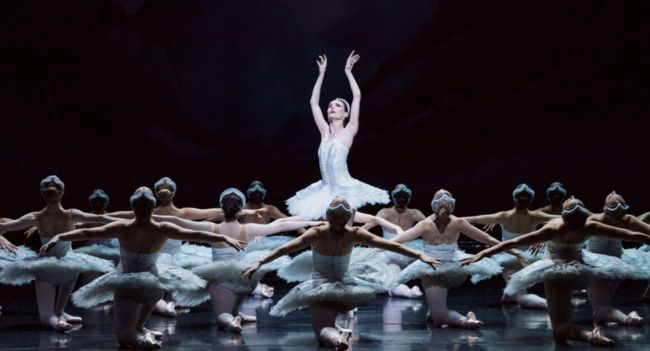Despite being written over a century ago, Tchaikovsky’s ballet Swan Lake has retained its power – and popularity – and is still performed across the globe regularly by major ballet companies.
Why did Tchaikovsky write Swan Lake?
Although it has since become one of the most popular ballets of all time, Swan Lake had a far from auspicious beginning. In 1871 Tchaikovsky simply wrote a short ballet for his nephews and nieces on the Swan Lake legend.
When, four years later, he was commissioned to write a full-length score on the same story for the ballet of the Moscow Imperial Opera at the Bolshoi, he returned to the music he had already composed.
Some of the most poignant moments in the ballet are written for the violin, which is speculated to have been in dedication to Tchaikovsky’s former pupil Iosif Kotek, with whom Tchaikovsky was infatuated. ‘Passion rages through me with such unimaginable force,’ Tchaikovsky wrote to his brother of Kotek. He went on to write a Violin Concerto, which is considered to be dedicated to Kotek – although it was never dedicated officially, because of the fear of gossip.
What is the story of Tchaikovsky’s Swan Lake?
Tchaikovsky’s ballet tells the story of Odette, who is turned into a swan by the evil Baron Von Rothbart and is kept under his spell. The spell can only be broken if someone who has never loved before swears an oath of undying love to her and promises their hand in marriage. Prince Siegfried falls in love with Odette and does just that – but is deceived by Baron Von Rothbart. He dances with who he believes is Odette and asks for her hand in marriage, but in fact, the mystery woman is Odile. Odette knows she will remain a swan forever. They decide to die together and throw themselves into the lake.
The plot, although written by librettists Vladimir Begichev and Vasily Geltser, draws on aspects from a number of existing sources. The myth of the Swan-Maiden appears in many cultures, and the legend of human to animal metamorphosis is widespread – one apt example is the swan in Wagner’s Lohengrin, who is Elsa’s enchanted brother.
The most direct sources for the scenario are the Russian tale ‘Sweet Makhail ivanovich the Rover’, about a huntsman who meets a swan-maiden, and the southern German legend of a forester who is about to shoot a swan when it turns into a woman.
Tchaikovsky’s change of compositional style
Before Tchaikovsky, fairytale ballets were composed from a series of divertissements, but Swan Lake, the first of his three full-length ballets, broke away from this tradition.
It is the first recognisably symphonic ballet score, setting to music a dramatic narrative as serious as that of any opera.
This new style rather foxed the first choreographer, the Austrian Wenzel Reisinger, who re-ordered the movements and added music from other sources to present it in a more conventional way.
The first performances of Swan Lake – from failure to triumph
Badly staged and rehearsed, the first performance of Tchaikovsky’s Swan Lake took place in March 1877 was not a great success. The music was considered to be ahead of its time and the dancers were not trained to keep up with such adventurous writing as Tchaikovsky’s.
A revival with new choreography took place in 1882, but it wasn’t until after Tchaikovsky’s death in 1893 that the ballet finally won the hearts of audiences.
It was partly the success of the composer’s two other full-length ballets Sleeping Beauty and The Nutcracker which prompted the directorate of the Imperial Theatre to take another look at Swan Lake.
What are the most famous dances from Swan Lake?
Dance of the Cygnets (Waltz in Act 1) ‘Danse des petits cygnes’
This is the scene in which four swans must dance together in a line with their arms crossed and must move in perfect unison. They move sideways with their heads turned together, performing pas de chat back and forth across the stage. Their legs move between the coupé and passé positions.
Black Swan (Odile) pas de deux
This is the dance between Prince Siegfried and the woman he believes to be Odette, but is actually Odile in disguise. This is the dance that ends in Siegfried proposing – unintentionally – to Odile instead of Odette and begins the cycle of destruction for the rest of the ballet. The evil Baron von Rothbart appears sporadically throughout the pas de deux to encourage Odile.
Finale
In a tragic manner not dissimilar to Shakespeare’s Romeo and Juliet, Swan Lake ends with the two lovers taking their own lives. The ballet’s main themes return with different instruments in the orchestra taking each line. The strings reach fever pitch as the drama heightens and – depending on the choreography – Odette dances with both Baron von Rothbart and Prince Siegfried.
The best recordings of Tchaikovsky’s Swan Lake
State Academic Symphony Orchestra of Russia/Vladimir Jurowski
Pentatone PTC 5186 640
London Symphony Orchestra/Andre Previn
Warner Classics 9676842
Philharmonia Orchestra/Santtu-Matias Rouvali
Signum Classics SIGCD648
Bergen Philharmonic Orchestra/Neeme Järvi
Chandos CHSA 5124(2)
